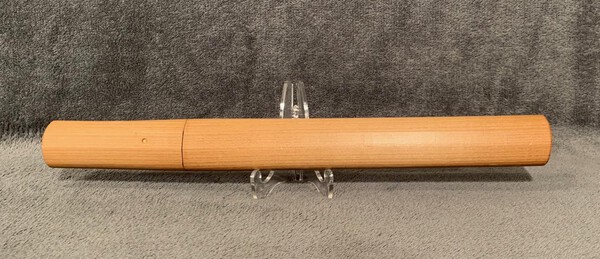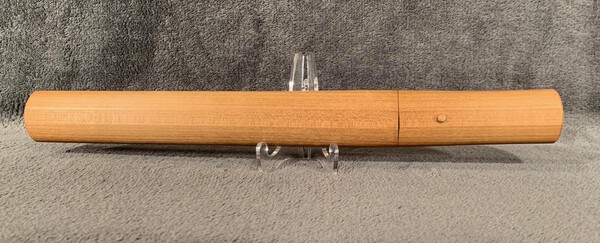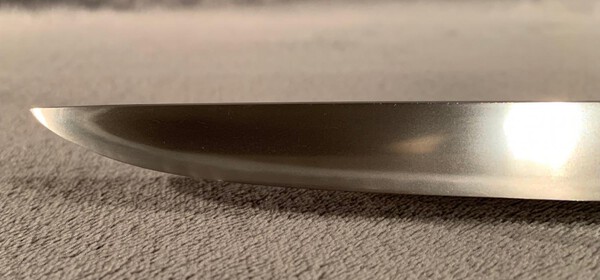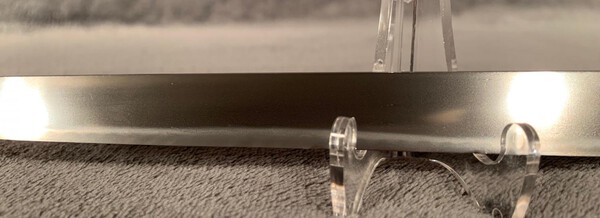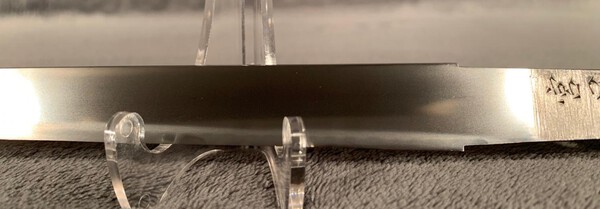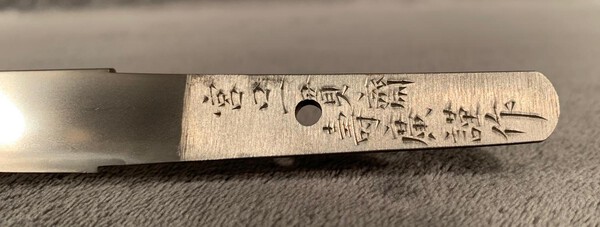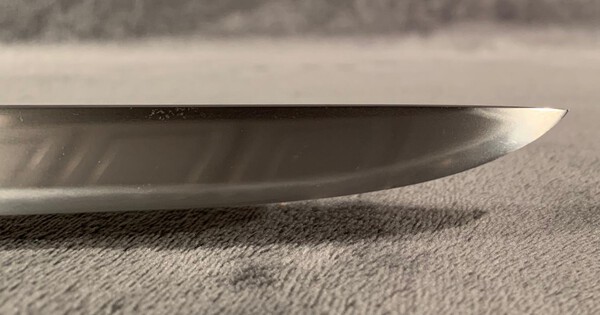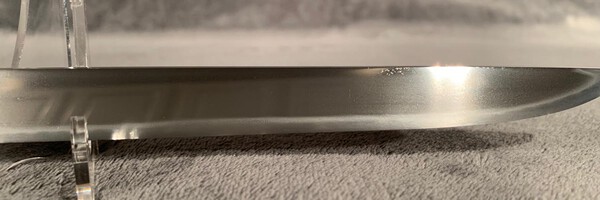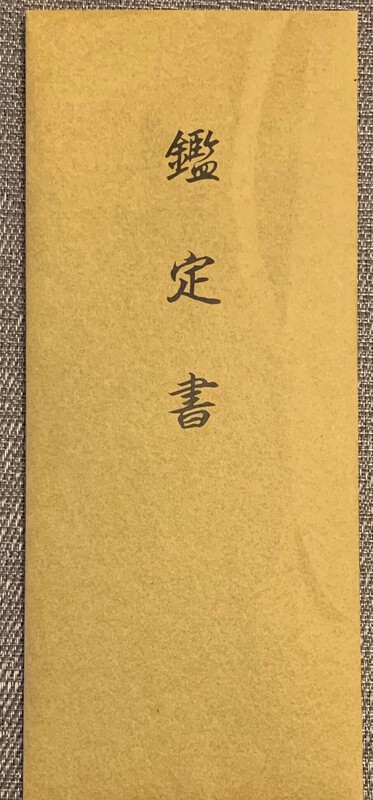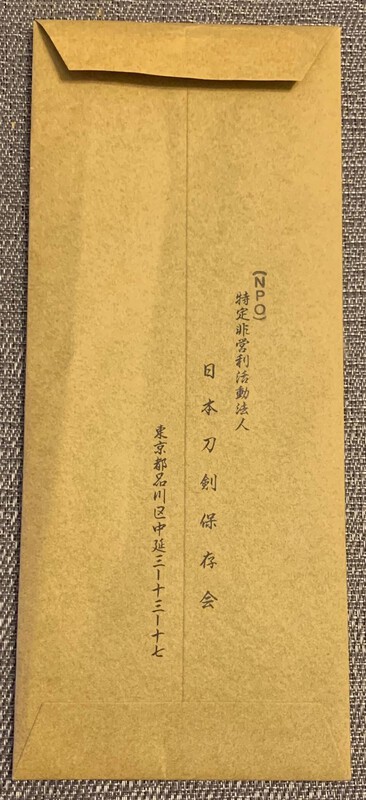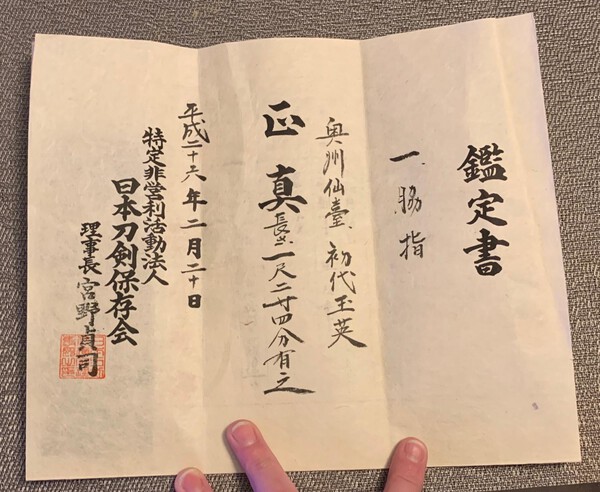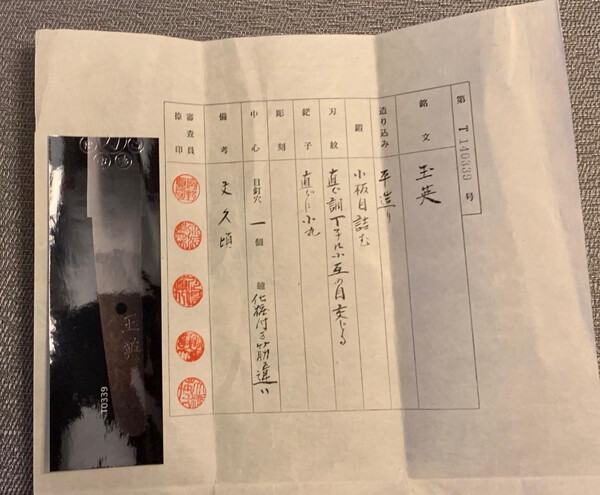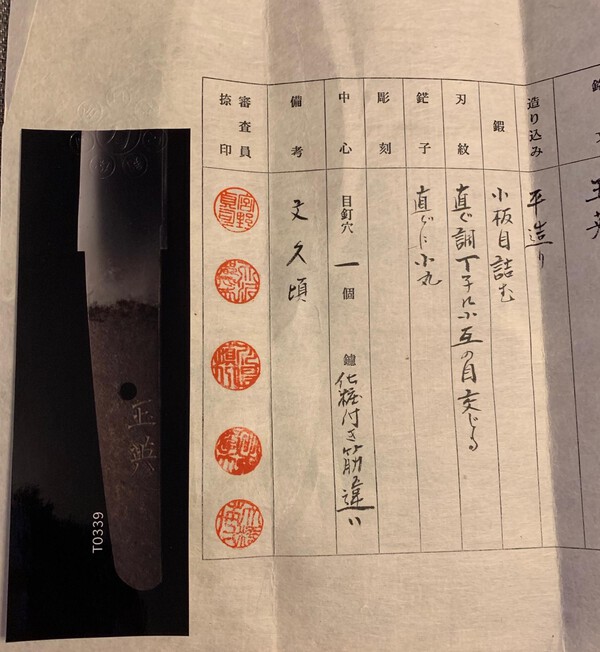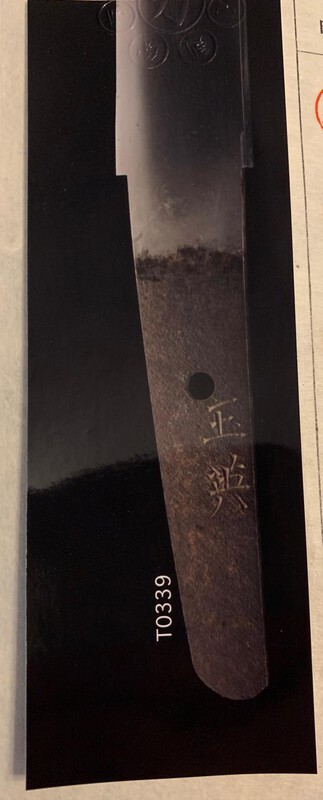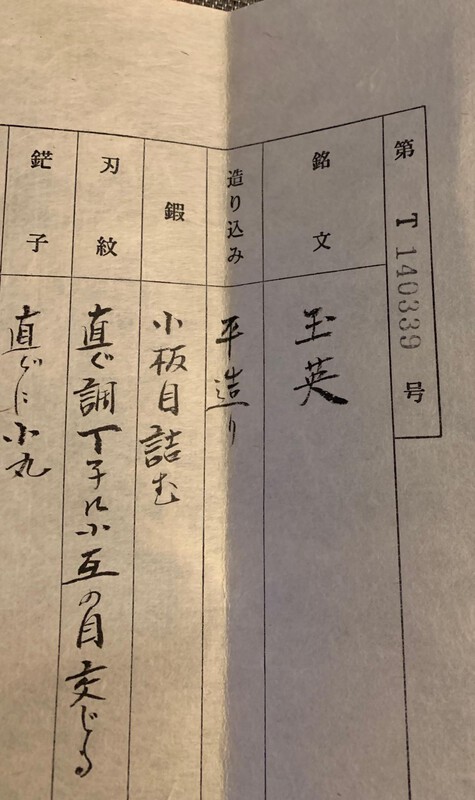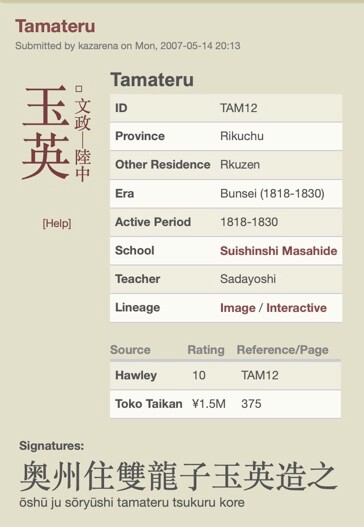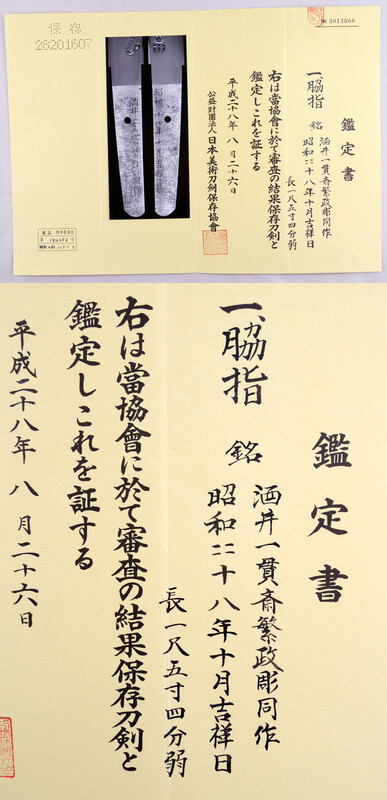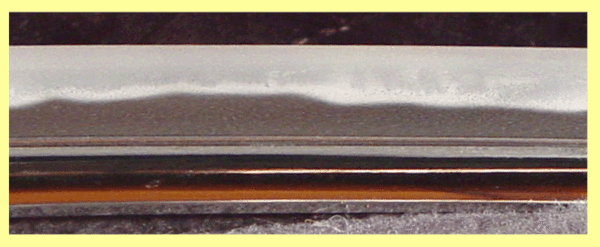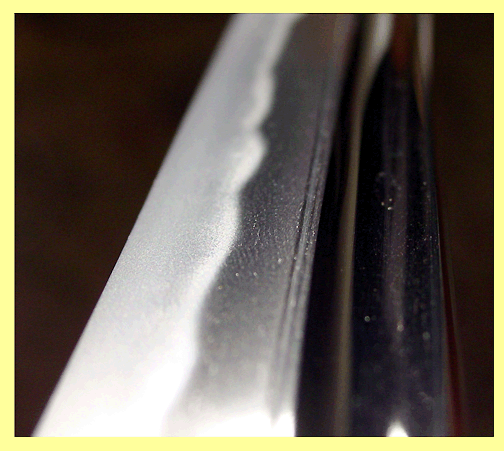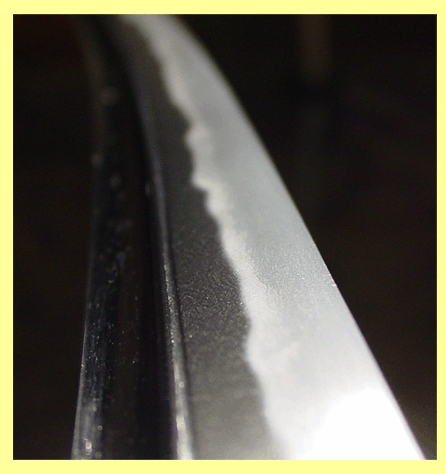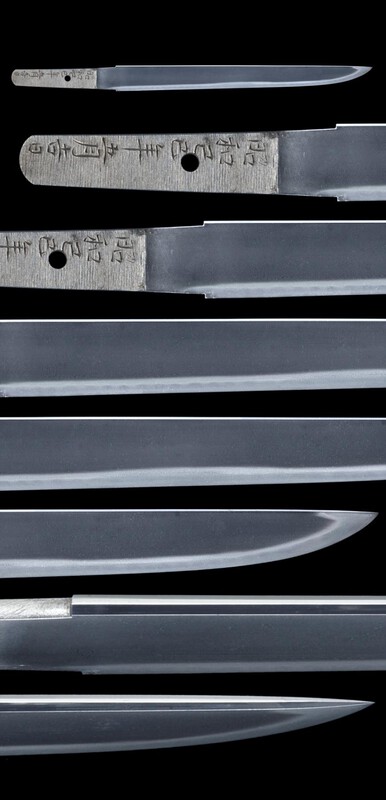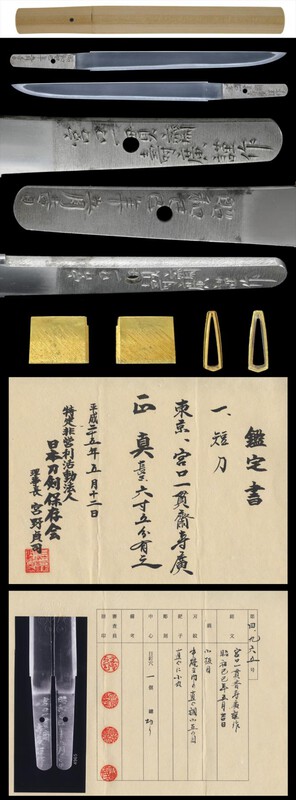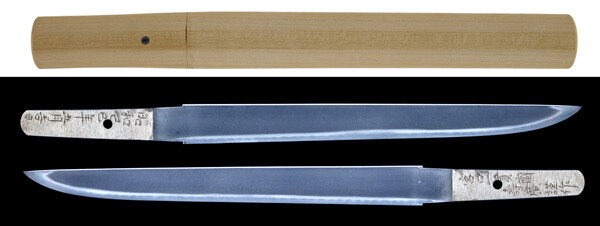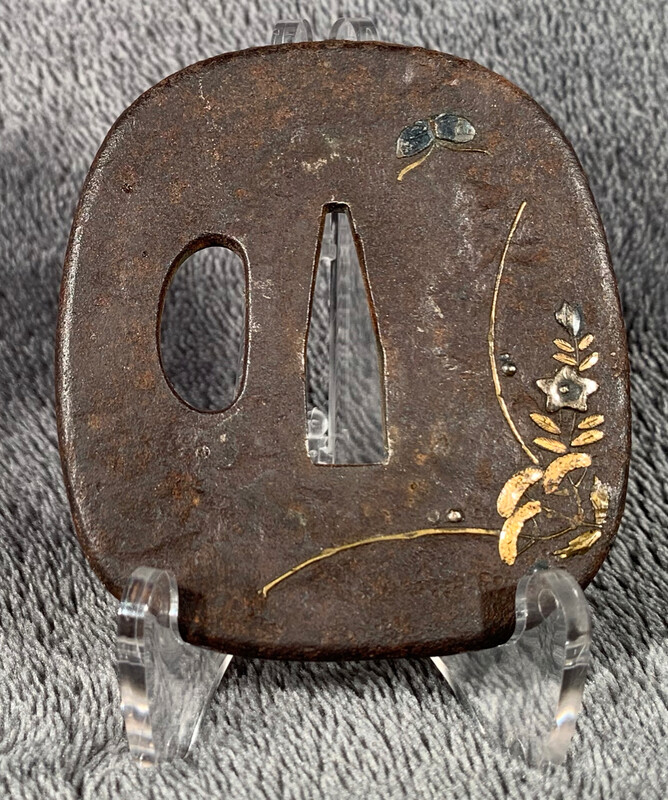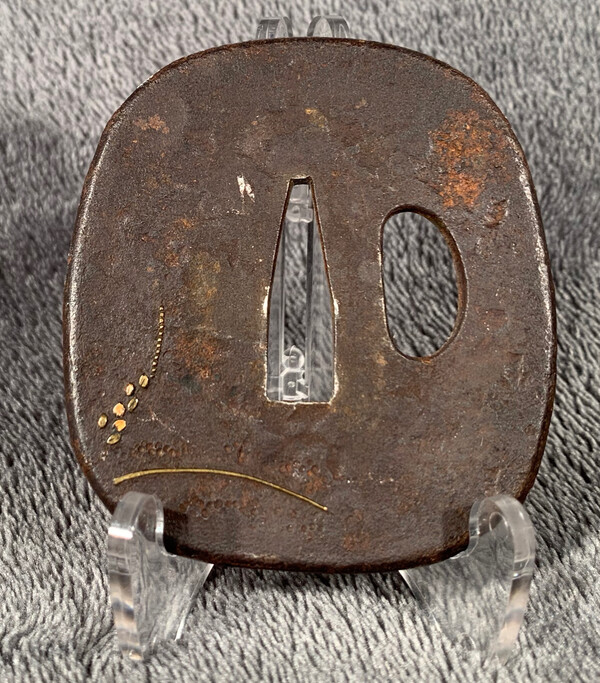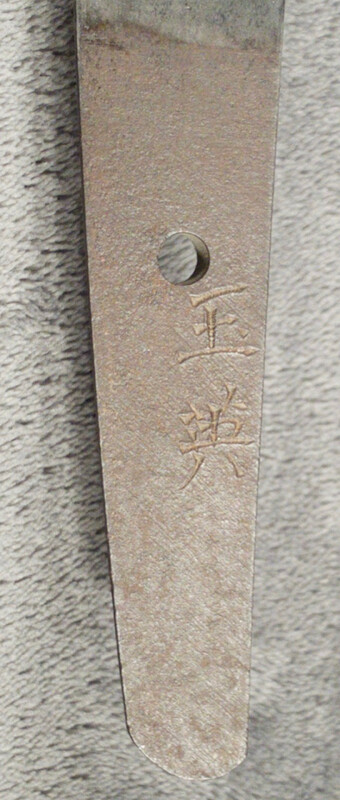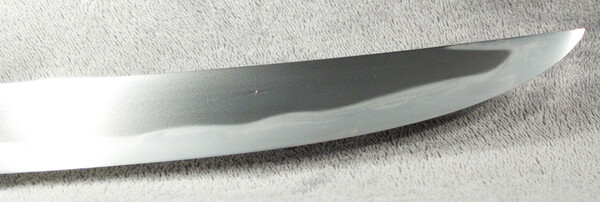-
Posts
2,730 -
Joined
-
Last visited
-
Days Won
43
Content Type
Profiles
Forums
Events
Store
Downloads
Gallery
Everything posted by SwordGuyJoe
-
-
I’ve seen a few of these blades at shows and more online. Just my opinion, but the price and reputation outpaces the quality - pretty handedly. Don’t get me wrong, on average, I’d say it’s better than your run of the mill gendaito, but not by a large margin. Pay $10k for a sword that has the quality of most $5k swords without a kikusui mon? Pass. They are rare. That is the one quality that I would acknowledge that rightfully drives the cost up. Again, just my opinion. Feel free to ridicule
-
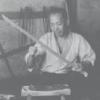
Sakai Ikkansai Shigemasa Daito W/ Bonji And Boho
SwordGuyJoe replied to SwordGuyJoe's topic in Sold Archive
There is no accounting for bad taste -

Sakai Ikkansai Shigemasa Daito W/ Bonji And Boho
SwordGuyJoe replied to SwordGuyJoe's topic in Sold Archive
It feels like a reverse auction at this point! -
Bump
-
I am offering a "let's just sell these things" discount. Here are discounted prices on all blades that I have listed: - Fujiyasu Masahira Wakizashi: $3,500 ($1,000 off) - Shodai Tamateru Wakizashi: $3,000 ($600 off) - Sakai Shigemasa Tanto: $3,500 ($1,000 off) - Sakai Shigemasa Katana: $6,000 ($750 off) - Sakai Shigemasa Wakizashi: $3,000 ($600 off) - Miyaguchi Toshihiro/Yasuhiro Tanto: $3,000 ($600 off)
-
All, I have received the papers for this blade. It is papered to Shodai Tamateru. Tamateru (玉英), 1st gen., Bunsei (文政, 1818-1830), Ōshū – „Sōryūshi Tamateru“ (雙龍子玉英), „Ban Ryū́emon Tamateru kore o tsukuru“ (万龍右衛門玉英造野), civilian name „Arai Ryū́emon“ (新井龍右衛門), he came originally from Tome (登米) of Ōshū province, the village was then also pronounced as „Toyoma“, during his early years he signed with „Ban Sadanori“ (万定則) and made small guns called „chōjū“ (鳥銃), later he studied sword forging under Yasuteru (安英), a smith of Ōshū́s Ichinoseki fief (一関藩), but he learned later also from Taikei Naotane (大慶直胤) and Sendai Sadayoshi (定義), thereupon he was hired by the Date family (伊達), the daimyō of the Sendai fief (仙台藩) and elevated into the samurai class, his gō was „Sōryūshi“ (雙龍子), he died on the 22nd day of the ninth Bunkyū two (文久, 1862), muji-hada, gunome-chōji in nioi-deki, sometimes also with ko-nie and/or a sugu-yakidashi
-
Thanks everyone! It is a really pretty blade and if someone would be interested in bundling together, I would be willing to talk about an additional discount.
-
Yes - that’s the one.
-
The only one I had in Military mounts sold. It was a stunner by Miyaguchi Ikkansai Toshihiro/Yasuhiro and the mounts were custom type 3/0.
-

Sakai Ikkansai Shigemasa Daito W/ Bonji And Boho
SwordGuyJoe replied to SwordGuyJoe's topic in Sold Archive
Thanks Brian. He is probably my favorite smith and was exceptionally talented. -
I have posted 4 swords for sale so far. More to come, but if you’d like to see the remainder of the list, please PM me.
-
Thanks Greg. I’m trying to restrain from saying what I really think about these blades, as it will just come across as overt salesmanship. I’ll just say that I have sold multiple blades and invested far more than I’m asking, to get my collection to the place it is today. So these are the very finest blades by the handful of Smiths that I collect. Those that “don’t fit” my collection (like the shinshinto blade as example), were purchased because I found them to be particularly fine examples.
-
All, This is a lovely blade and the horimono, jigane, and Hamon are exceptional. If full disclosure, there is a small mune ware, hence the low sales price. Sword Information: Type: Wakizashi Sugata: I am really not sure what you'd call it! Mei: Sakai Ikkansai Shigemasa Hori Do Saku Date/Era: A lucky day in October, 1973 School/Den: Kasama Ikkansai Shigetsugu Mon Tradition: Soden-Bizen Authentication/Papers: NBTHK Hozon Sword Details: Nagasa: 46.7 cm Mihaba: 3.52 cm Kasane: 0.79 cm Nakago Jiri: Ubu, Kurijiri Yasurime: Kiri Mune: Iori Jihada: Itame Hamon: Active Gunome Choji, with Sunagashi and Kinsuji Boshi: Komaru, w/ Short Turnback Smith Information: Rating: - Toko-Taikan: 2 Million Yen - Gendai Tosho Ninki Banzuke: East Block, Maegashira Smith Details: Shigemasa (繁政), Shōwa (昭和, 1926-1989), Tōkyō – „Shigemasa“ (繁正), „Sakai Ikkansai Shigemasa“ (酒井一貫斎繁正), „Tōtō Jōhoku ni oite Sakai Ikkansai Shigemasa kinsaku“ (東都於城北酒井一貫斎繁正謹作), „Sakai Ikkansai Shigemasa“ (酒井一貫斎繁政), „Sakai Shigemasa hori-dōsaku“ (酒井繁政彫同作), civilian name „Sakai Hiroshi“ (酒井寛), he was born on August 19th 1905 as third son of Sakai Yasujirō (酒井安次郎), the younger brother of Miyaguchi Shigetoshi (宮口繁寿), in Shizuoka, in 1925 he started his apprenticeship as a swordsmith under Kasama Shigetsugu (笠間繁継) and became independent in 1932, he signed his name first with the characters (繁正), during World War II he worked for the forges „Nihontō-tanrenkai“ (日本刀鍛錬会) and „Ōkura-Nihontō-tanrenjo“ (大倉日本刀鍛錬所), later he lived in Tōkyō´s Itabashi district (板橋), as his master Shigetsugu he too was an excellent horimono carver, he died 1995 at the age of 91, during World War II he forged ten tantō for Admiral Yamamoto Isoroku (山本五十六, 1884-1943) who rewarded several persons with them for their merits in assisting the attack on Pearl Harbor which was also co-planned by Yamamoto From Markus Sesko's, "Index of Japanese Swordsmiths" Photo Credit: e-sword SOLD
-

Sakai Ikkansai Shigemasa Daito W/ Bonji And Boho
SwordGuyJoe replied to SwordGuyJoe's topic in Sold Archive
Thank you very much! I have turned down at least a half dozen blades with longer nagasa and horimono because the craftsmanship wasn't up to the level of this blade. -
Sword Information: Type: Katana Sugata: Shinogi Zukuri Mei: Sakai Ikkansai Shigemasa Date/Era: A lucky day in March, 1974 School/Den: Kasama Ikkansai Shigetsugu Mon Tradition: Soden-Bizen Authentication/Papers: NTHK Kanteisho Sword Details: Nagasa: 67.1 cm Mihaba: 3.4 cm Nakago Jiri: Ubu, Kurijiri Yasurime: Kiri Mune: Iori Jihada: Itame Hamon: Active Choji Midare, with Sunagashi and Kinsuji Boshi: Komaru, w/ Short Turnback Smith Information: Rating: - Toko-Taikan: 2 Million Yen - Gendai Tosho Ninki Banzuke: East Block, Maegashira Smith Details: Shigemasa (繁政), Shōwa (昭和, 1926-1989), Tōkyō – „Shigemasa“ (繁正), „Sakai Ikkansai Shigemasa“ (酒井一貫斎繁正), „Tōtō Jōhoku ni oite Sakai Ikkansai Shigemasa kinsaku“ (東都於城北酒井一貫斎繁正謹作), „Sakai Ikkansai Shigemasa“ (酒井一貫斎繁政), „Sakai Shigemasa hori-dōsaku“ (酒井繁政彫同作), civilian name „Sakai Hiroshi“ (酒井寛), he was born on August 19th 1905 as third son of Sakai Yasujirō (酒井安次郎), the younger brother of Miyaguchi Shigetoshi (宮口繁寿), in Shizuoka, in 1925 he started his apprenticeship as a swordsmith under Kasama Shigetsugu (笠間繁継) and became independent in 1932, he signed his name first with the characters (繁正), during World War II he worked for the forges „Nihontō-tanrenkai“ (日本刀鍛錬会) and „Ōkura-Nihontō-tanrenjo“ (大倉日本刀鍛錬所), later he lived in Tōkyō´s Itabashi district (板橋), as his master Shigetsugu he too was an excellent horimono carver, he died 1995 at the age of 91, during World War II he forged ten tantō for Admiral Yamamoto Isoroku (山本五十六, 1884-1943) who rewarded several persons with them for their merits in assisting the attack on Pearl Harbor which was also co-planned by Yamamoto From Markus Sesko's, "Index of Japanese Swordsmiths" Photo Credit: Fred Weissberg Sold 2% of the sale goes to the board, if sold here. I will offer a 2 day inspection period and allow returns, if I have misrepresented the blade in any way.
-
Sword Information: Type: Tanto Sugata: Hira Zukuri Mei: Miyaguchi Ikkansai Toshihiro Kin Saku Date/Era: A lucky day in May, 1929 School/Den: Kasama Ikkansai Shigetsugu Mon Tradition: Soden-Bizen Authentication/Papers: NBTHK Hozon Sword Details: Nagasa: 19.7 cm Mihaba: 2.0 cm Kasane: 0.38 cm Nakago Jiri: Ubu, Kurijiri Yasurime: Kiri Mune: Mitsu Mune Jihada: Itame Hamon: Nie Deki Suguha, w/ Ko Choji Ashi Boshi: Komaru, w/ Short Turnback Smith Information: Rating: - Toko-Taikan: 1.8 Million Yen - Gendai Tosho Ninki Banzuke: East Block, Yokozuna (Highest rating) - 6th Shinsaku Nihonto Denrankai: Special Honor Seat (Highest Rating) - Tosho Banzuke: Sai Jo Saku (Highest Rating) Smith Details: Toshihiro (寿広), Shōwa (昭和, 1926-1989), Tōkyō – „Miyaguchi Ikkansai Toshihiro“ (宮口一貫斎寿広), „Toshihiro saku“ (寿広作), „Miyauchi Toshihiro“ (宮口寿広), civilian name „Miyaguchi Shigeru“ (宮口繁), he was born in April 1897 as son of Yonezawa Kanjirō Masatoshi (米沢勘治郎正寿) in Tōkyō, he and his father were both adopted into the Miyaguchi family, after the death of his father he continued his studied under Kasama Shigetsugu (笠間繁継), he used the gō „Ikkansai“ (一貫斎) from August 1916 onwards, in 1934 he entered the Yasukuni forge, special-order blades were signed by him with the name „Toshihiro“, the larger numbers of blades he made for the Yasukuni forge were signed with his Yasukuni-name „Yasuhiro“ (靖広), blades made with western steel and some made by his students were signed by him with the pseudonym „Kunimori“ (国護), in December 1936 he entered the Ōkura forge (大倉鍛錬所) and died on March 21st 1956 at the age of 59, his posthumous Buddhist name is „Kantoku´in Han´a Shinshō“ (貫徳院繁阿真照), records say that he made about 500 blades for the Yasukuni forge From Markus Sesko's, "Index of Japanese Swordsmiths" Photo Credit: www.seiyudo.com Sold
-
It really is a peach of a sword! It really needs to be, since it is obviously outside of the focus of my collection. I saw the blade a few times before I just couldn't resist anymore. If it were going to remain mine, I would submit it for TH, as I believe it is that good. I am obviously not the NBTHK, so that's just my opinion.
-
-
All, For sale is an excellent Soshu den, hira-zukuri wakizashi by Tamateru. The blade is absolutely phenomenal! The jigane is astounding, the Hamon is vivid and active, and the Sugata is stout and powerful. The blade comes with modest Koshirae and please note that the Kashira is cracked. I have about 40 high resolution photos found on drop box. They are decent, but let's be honest, I am no photographer. 2% of the sales price goes to the NMB and I offer a 2 day return policy, but need to limit the returns to be only if I misrepresented something - sorry, but I need to be able to count on the sale. If you haven't done business with me, I will be happy to provide references that will confirm my honest dealings. Sold The nagasa is 20.5" The sword have NTHK papers and as soon as I get a photo, I will add them to the post. I am not sure if this is shodai or nidai, but below is information on both from Markus' Index. Shodai: Tamateru (玉英), 1st gen., Bunsei (文政, 1818-1830), Ōshū – „Sōryūshi Tamateru“ (雙龍子玉英), „Ban Ryū́emon Tamateru kore o tsukuru“ (万龍右衛門玉英造野), civilian name „Arai Ryū́emon“ (新井龍右衛門), he came originally from Tome (登米) of Ōshū province, the village was then also pronounced as „Toyoma“, during his early years he signed with „Ban Sadanori“ (万定則) and made small guns called „chōjū“ (鳥銃), later he studied sword forging under Yasuteru (安英), a smith of Ōshū́s Ichinoseki fief (一関藩), but he learned later also from Taikei Naotane (大慶直胤) and Sendai Sadayoshi (定義), thereupon he was hired by the Date family (伊達), the daimyō of the Sendai fief (仙台藩) and elevated into the samurai class, his gō was „Sōryūshi“ (雙龍子), he died on the 22nd day of the ninth Bunkyū two (文久, 1862), muji-hada, gunome-chōji in nioi-deki, sometimes also with ko-nie and/or a sugu-yakidashi Source Rating Reference/Page Hawley 10 TAM12 Toko Taikan ¥1.5M 375 Nidai: Tamateru (玉英), 2nd gen. → Naomitsu (直光) Naomitsu (直光), Keiō (慶応, 1865-1868), Ōshū – „Sōryūshi Fujiwara Tamateru“ (雙龍子藤原玉英), „Rikuzen no Kuni-jū Fujiwara Tamateru“ (陸前国銃藤原玉英), „Sōryūshi Naomitsu“ (雙龍子直光), civilian name „Arai Ryūgorō“ (新井龍五郎), he was the son of Tamateru (玉英) and succeeded as 2nd gen. of this line, like his father he studied under Taikei Naotane (大慶直胤), he lived in Ōshū́s Wakuya (涌谷) and died in the 22nd year of Meiji (明治, 1889) at the age of 69 Source Rating Reference/Page Hawley 10 NAO105 Toko Taikan ¥1.8M 448 High Resolution Photos: https://www.dropbox.com/sh/4cxtyrlllzcnszv/AADdfE8Ph6tlyrgJpyUZmCk8a?dl=0
-
Thanks everyone. I thought I would sell some swords, but was reminded how great and supportive this community really is!
-
Thanks all for the well wishes. I really appreciate it gents!
-
All, I’ve been a little swamped lately, so not posting as frequently as I’d like. I’ll save you the sob story, but the divorce-man comes a calling, which means I need to move quite a few swords. I haven’t finished building out the list, but the sale will be 90% of what I paid, so even a dealer can make a few dollars and a collector can get a fantastic deal on an amazing blade. I just need to consider the handful of blades that are off the table (if any). Most here know what I collect, but I’ll be selling off phenomenal gendaito, Shinsakuto, and even a shinshinto piece. All are in excellent polish and all blades - save one - is papered (that can be if the Smith is still alive). If anyone is interested before I get the pages up in the next couple weeks, send me a PM and I can give you a run down. I know the rules and know that I’m asking for some leeway here, but 2% of all sales will go to the board and I’ve been pretty generous in sales and donation, so maybe that’ll buy me some good will? I will offer a 2 day inspection period and if the blade is misrepresented in anyway, I will provide a refund upon return of the blade.
-
I feel like I recently saw this blade for sale... could be wrong of course. If so, it’s a Shinsakuto tanto made by a student of Akihira.


